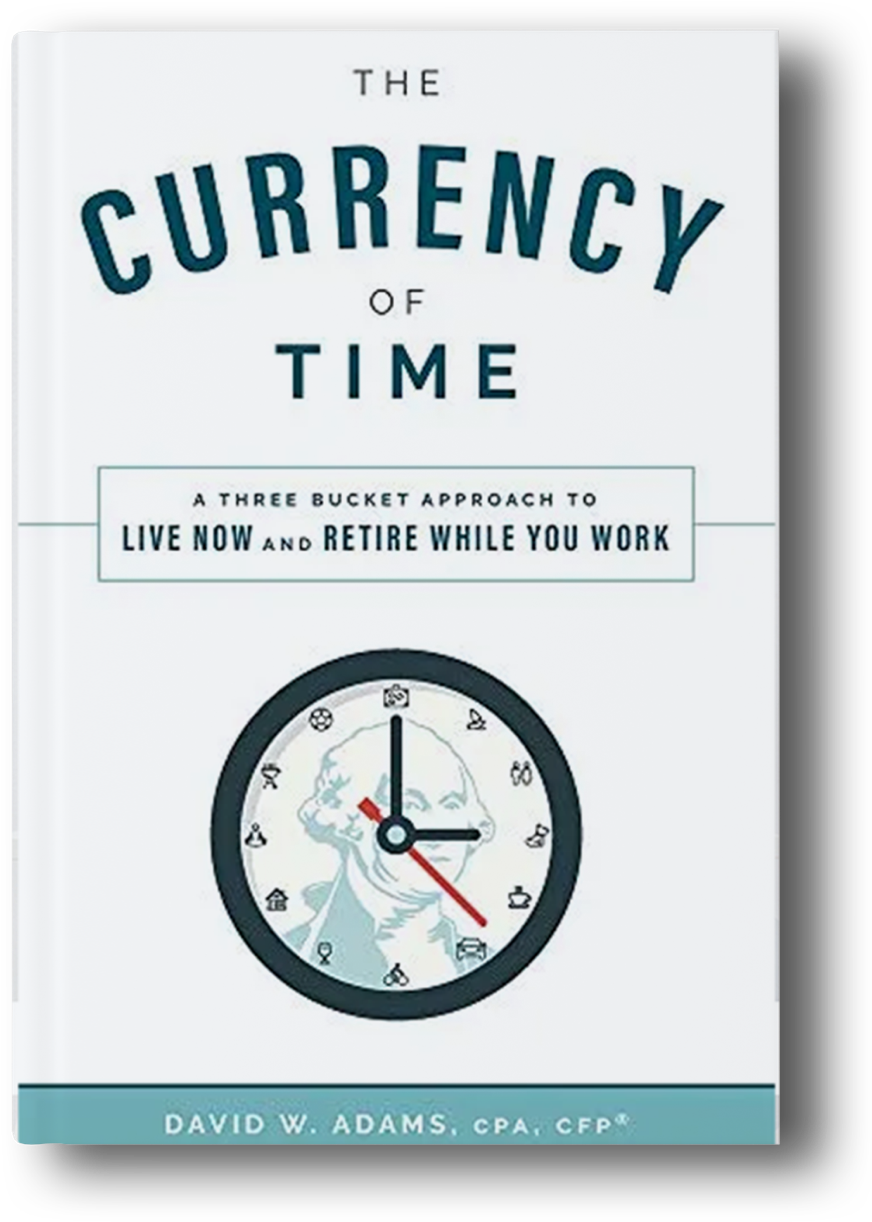Retire While You Work® Podcast
Join us as we discuss various topics to help you find the path to viewing money as a means to the true currency, TIME, and learn how to build more memories and experiences.
View All EpisodesJoin us as we discuss various topics to help you find the path to viewing money as a means to the true currency, TIME, and learn how to build more memories and experiences.
View All Episodes
What if you could do what you're passionate about and achieve a work-life balance? What if you were relieved of the pressure to have some massive amount saved?
Learn More
It’s no secret we’re in the midst of a bear market. For those who have the cash to invest, this can be a great opportunity to get a discount in the market. The S&P 500 is floating just under 3,700 at the time of this writing. That’s over a thousand points from its all-time highs at the beginning of this year. It sounds bad to be down over 20%, but where do we think we’ll be 5 years from now? What about 10 years from now? What about 30!? Just 13 years ago, the S&P 500 bottomed after the financial crisis by under 700 points. Hindsight is always 20/20, but for those that were in the position to buy, what an opportunity!
The question still looms to this day and is constantly asked in our office… should I invest a lump sum of cash now or wait for the market to drop further?
Let’s address the obvious: this is a great problem to have! Whether it be a large bonus, you sold a property, you inherited some wealth, or maybe some extra Christmas or birthday money, you’re in a great position to have cash and be able to do something with it.
But, what can hold so many people back is the whole concept of regret with buying into the market. If you put the money to work and the market falls further, you’ll be kicking yourself for not putting it to work slowly over time. However, if you spread out your purchases over time and the market pops off, you’ll regret not putting more money upfront.
So, what decision should you make? Is there data to back up whether one decision is better than the other? Thankfully, there is.
Before diving in, let me preface this article with this: no matter if you invest a lump sum or dollar cost average, you will never time the market perfectly. No one in the history of humankind has ever timed the market perfectly.
There’s another professional in our industry, Nick Maggiulli, who I’ll link to this blog and give credit for the data. Feel free to read his in-depth analysis as he explains the numbers.
Nick states the following, “When deciding between investing all your money now (lump sum) or over time (dollar cost averaging), it is almost always better to invest it now, even on a risk-adjusted basis. This is true across asset classes, time periods, and nearly all valuation regimes. Generally, the longer you wait to deploy your capital, the worst off you will be. I say ‘generally’ because the only time when you are better off by doing DCA is when averaging into a falling market. However, it is precisely when the market is falling that you will be the least enthusiastic to keep buying.”
Why is this the case? Well, to put it simply, most of the time, the market goes up. In three out of four years, the market is up, and in one out of four years, the market is down. The long-term annual average of the S&P 500 has been close to 10% for the past 100 years.
So, if we know that a majority of the time, the stock market goes up, why wouldn’t we race to put our money to work as soon as we could? I think it’s because we’re all paralyzed by that one exception to the rule: we could be entering a bear market, so we’d like our performance to be better by DCA’ing into the falling bear market.
Well, let’s put ourselves in today’s market. Again, at the time of writing, we’re down about 23% from all-time highs. Could we fall to down 30%? Sure could. But could we also pop and end the year only down 10%? You bet. Do I know? No. Does anyone know? Nope.
One of my favorite quotes of all time about the stock market is this: “The stock market is the only store in the world where when things go on sale, people run out.” How true! The market is down 23%, and the market has always returned to all-time highs before making new all-time highs again. There’s a nearly guaranteed 23% discount going on in the market right now; why not take advantage if your time horizon is long-term?
For long-term investors, ignore the media madness about the short-term movements of the stock market and set up your plan for long-term success by investing cash when you receive it. You’ll almost always come about better than waiting and trying to time the market!
Any opinions are those of the author and not necessarily those of Raymond James. This material is being provided for informational purposes only and is not a complete description, nor is it a recommendation. There is no guarantee that these statements, opinions, or forecasts provided herein will prove to be correct. Investing involves risk and you may incur a profit or a loss regardless of strategy selected. No investment strategy can guarantee your objectives will be met. Prior to making an investment decision, please consult with your financial advisor about your individual situation. The S&P 500 is comprised of approximately 500 widely held stocks that is generally considered representative of the U.S. stock market. It is unmanaged and cannot be invested into directly. Past performance is no guarantee of future results.
Adams Wealth Partners, LLC is not a registered broker/dealer and is independent of Raymond James Financial Services. Investment advisory services offered through Raymond James Financial Services Advisors, Inc. Securities offered through Raymond James Financial Services, Inc., member FINRA / SIPC
Neither Raymond James Financial Services nor any Raymond James Financial Advisor renders advice on tax issues, these matters should be discussed with the appropriate professional.
Links are being provided for information purposes only. Raymond James is not affiliated with and does not endorse, authorize, or sponsor any of the listed websites or their respective sponsors. Raymond James is not responsible for the content of any website or the collection or use of information regarding any website's users and/or members.
The running stock ticker is not a recommendation to buy or sell stocks of the companies pictured.

Securities offered through Raymond James Financial Services, Inc., member FINRA/SIPC, marketed as Adams Wealth Partners. Investment advisory services offered through Raymond James Financial Services Advisors, Inc.Adams Wealth Partners is separately owned and operated and not independently registered as a broker-dealer or investment adviser.
Certified Financial Planner Board of Standards Inc. owns the certification marks CFP®, CERTIFIED FINANCIAL PLANNER™, CFP® (with plaque design) and CFP® (with flame design) in the U.S., which it awards to individuals who successfully complete CFP Board's initial and ongoing certification requirements. CFP® holders at Adams Wealth Partners, LLC are: David Adams, Myles Zueger, Carson Odom, and Spencer Provow
CPA holders at Adams Wealth Partners, LLC are: David Adams, Carson Odom, and Christine Kinsley
Please note that all archived content is for informational purposes only. Investment decisions should not be based on the content provided herein. For the most up-to- date statistical information and analysis, please contact your financial professional.

The 2024 Forbes ranking of America’s Top Wealth Management Teams Best-In-State, developed by SHOOK Research, is based on an algorithm of qualitative criteria, mostly gained through telephone and in-person due diligence interviews, and quantitative data. This ranking is based upon the period from 3/31/2022 to 3/31/2023 and was released on 01/09/2024. Advisor teams that are considered must have one advisor with a minimum of seven years of experience, have been in existence as a team for at least one year, have at least 5 team members, and have been nominated by their firm. The algorithm weights factors like revenue trends, assets under management, compliance records, industry experience and those that encompass best practices in their practices and approach to working with clients. Portfolio performance is not a criteria due to varying client objectives and lack of audited data. Out of approximately 10,100 team nominations, 4,100 advisor teams received the award based on thresholds. This ranking is not indicative of an advisor's future performance, is not an endorsement, and may not be representative of individual clients' experience. Neither Raymond James nor any of its Financial Advisors or RIA firms pay a fee in exchange for this award/rating. Raymond James is not affiliated with Forbes or Shook Research, LLC. Please see https://www.forbes.com/lists/wealth-management-teams-best-in-state/ for more info.
Barron’s Top 1,200 Financial Advisors 2023, is based on the period from 09/30/2021 - 09/30/2022 and was released on 03/15/2023. 5630 nominations were received and 1,200 won. Neither Raymond James nor any of its advisors pay a fee in exchange for this award. More:https://www.raymondjames.com/award-disclosures/#2023-barrons-top-1200
Please note that all archived content is for informational purposes only. Investment decisions should not be based on the content provided herein. For the most up-to- date statistical information and analysis, please contact your financial professional.
Raymond James is not affiliation and does not endorse the above-mentioned organizations.
Nashville Wealth Management & Financial Advisors | David Adams CPA, CFP® | Copyright © 2024 | Privacy Notice | Legal Disclosure| Disclaimers
